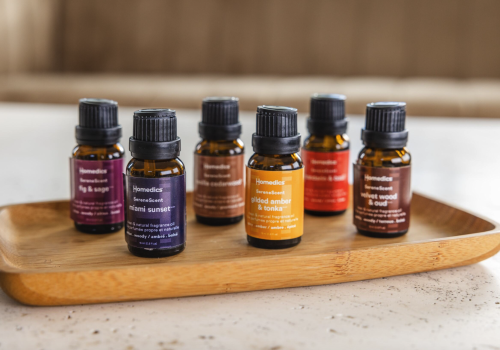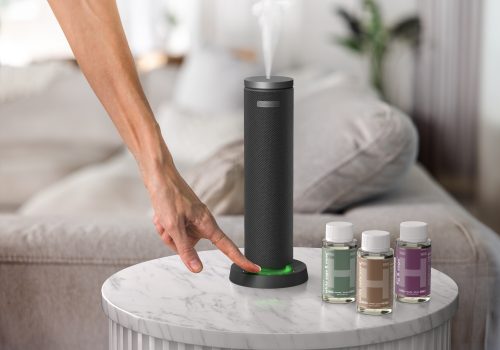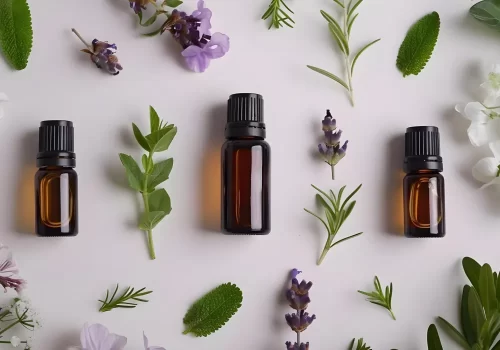8 Facts About Air You Need to Know
Whether you’re an easy-breathing expert or a fresh-air freshman, there’s always something new to learn about your indoor air quality. Check out the fun facts about air below to brush up on your knowledge and be sure to take our Air IQ Quiz to put it to the test!
1. Pet hair isn’t triggering your allergies (fur real!)
If you’re allergic to your furry friends, your body’s immune system isn’t reacting to their hair. Your symptoms are actually triggered by the proteins in their urine, saliva, or dander. According to the Asthma and Allergy Foundation of America, “a truly hypoallergenic cat or dog does not exist” since pet hair itself is not an allergen (mind-explosion!). However, Fido can carry allergens from the park, beach, or yard inside, where forced-air heating and air conditioning can spread them throughout your home.
2. VOCs (Volatile Organic Compounds) like new carpeting, furniture, cleaning supplies, and printers, can have a negative impact on the air quality in your home.
The odors (good, bad, and even worse) that come along with these common household items can attach themselves to super-small dust particles that float through your air—and stay there! That’s why the concentration of many VOCs is much greater indoors than outdoors. Yikes! Considering many of us work from home and probably don’t have proper ventilation systems, it’s important to know the adverse health effects these chemicals have, and how we can help stop them (hint: it’s with an air purifier).
WFH TIP! In many offices, printers are kept in open spaces with more ventilation to keep the VOCs at bay. Keep that in mind when setting up your at-home office.
3. The burning truth? You should blow out your scented candles…for good!
It’s true, cue the ahh-choos! Scented candles can harm your air and trigger asthma symptoms. While a single unscented candle’s output of VOCs isn’t necessarily a concern, those who regularly use one (or many!) often could be harming their home’s indoor air quality.
Don’t worry! You don’t have to completely get rid of your favorite scents to save your air. Here are a couple of options to maintain clean air and a fresh-smelling home:
Our Stress Release Relaxation Kit features a candle-sized diffuser and essential oil bottle to fill your air with soothing scents.
Our TotalClean® 5-in-1 UV Air Purifiers feature an aromatherapy tray so you can keep your space smelling great while clearing your air.
4. Your indoor air is dirty (but that doesn’t mean you have to move outside!)
It’s hard to believe, but indoor air pollution levels can be anywhere from 2 to 5 times more polluted than the outside air—seriously! Forced-air heating and AC systems can spread allergens, odors, and VOCs throughout your home. Plus, if your home is sealed to be energy efficient, these pollutants could be trapped inside (yikes!). Luckily, investing in a Homedics air purifier is one easy way to clear the air, though here are a few more ways to stop unwanted pollutants in their tracks:
- Keep your windows open if it’s nice out and the air quality outside is at a healthy level
- Clean your home often
- Swap scented candles and fragrance sprays for essential oil diffusers
- Groom your pets often
- Limit your use of chemical cleaners
5. Getting rid of Fido is NOT a good solution for improving air quality.
Whoa, whoa, whoa. Pump the brakes! There’s no need to get rid of your BFF. While your pet (or rather, their dander) has the ability to contribute to lower-quality air in the home, you don’t have to find your furry friend another home. You can keep the snuggles while reducing the effects of their dander and allergens by vacuuming your floor, couches, and mattresses weekly, and setting boundaries between your pet and where you sleep.
6. Your energy-efficient home doesn’t necessarily have better indoor air quality.
While it’s true that weatherizing your home to be more energy efficient and reduce energy bills can prevent outdoor pollution and allergens from getting inside, it also means that indoor air pollutants from sources inside the home can increase. That’s why it’s critical to ensure you have a good home-ventilation and filtering system.
7. Wait a second! I can sanitize my air? Like a kitchen counter?
Yes, kind of! Our TotalClean® collection features a 5-in-1 filtration process that can reduce airborne allergens hiding in your air. And unlike other air purifiers, they sanitize your air too thanks to UV-C technology and True HEPA filtration that reduce of bacteria, virus, mold, and fungus* (mind-explosion emoji!).
*UV-C technology and True HEPA filtration reduce Phi-X174 virus, A. niger mold, P. citirinum fungus, and E. coli bacteria validated by third-party testing
8. Your cozy night in could be causing more harm than good.
Let’s be honest, you can’t beat the sound of a crackling fire while you’re cozied up reading a book. But, the fine particles emitted from the smoke can be harmful to your health. According to the EPA, when wood isn’t burned completely, the smoke it produces contains fine, tiny particles (also called particle pollution, particulate matter, or PM2.5)—along with carbon monoxide and toxic air pollutants, including benzene, formaldehyde, acrolein, and polycyclic aromatic hydrocarbons. Ensuring your fireplace is properly vented definitely helps, but you can also open windows to let visible smoke escape, upgrade the filters in your central air system, or use an air purifier in the same room as your fireplace to enjoy it without worry.
Medical Disclaimer: This content is provided for informational purposes only and not intended to be a substitute for professional medical advice, diagnosis or treatment.
Sources
Pet Allergy: Are You Allergic to Dogs or Cats?, Asthma and Allergy Foundation of America: https://www.aafa.org/pet-dog-cat-allergies/
Indoor Air Quality in Commercial and Institutional Buildings, OSHA: https://www.osha.gov/sites/default/files/publications/3430indoor-air-quality-sm.pdf
What is Indoor Air Quality?, Asthma and Allergy Foundation of America: https://www.aafa.org/indoor-air-quality/
What Are The Trends in Indoor Air Quality and Their Effects on Human Health?, EPA: https://www.epa.gov/report-environment/indoor-air-quality
The Inside Store: A Guide to Indoor Air Quality, Consumer Product Safety Commission: https://www.cpsc.gov/Safety-Education/Safety-Guides/Home/The-Inside-Story-A-Guide-to-Indoor-Air-QualityFrequent Questions About Wood-Burning Appliances. EPA: https://www.epa.gov/burnwise/frequent-questions-about-wood-burning-appliances#pollution





